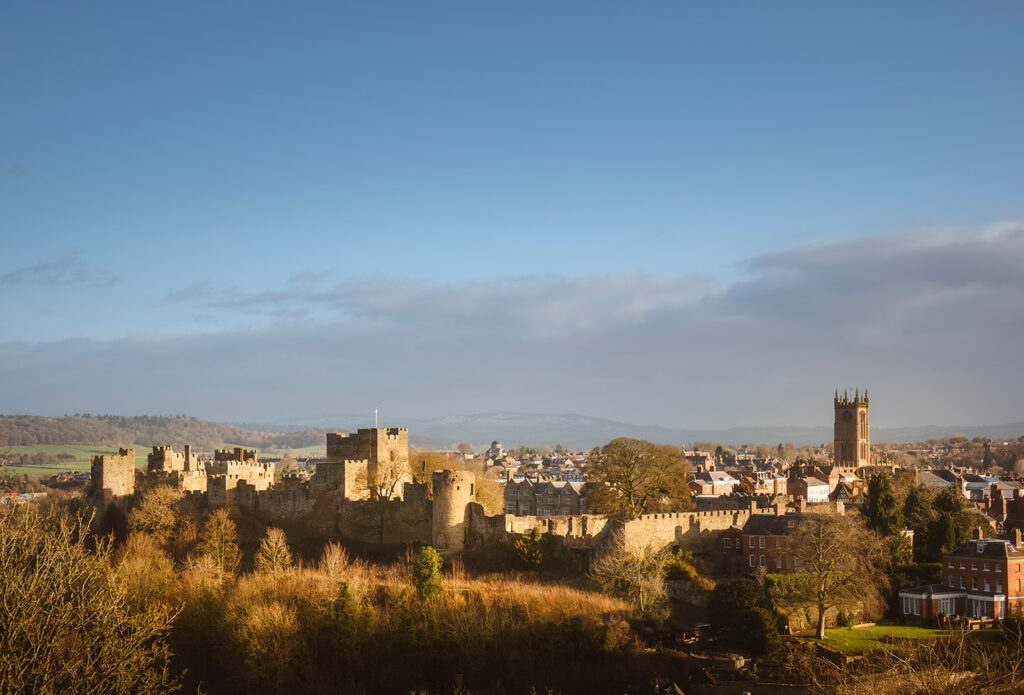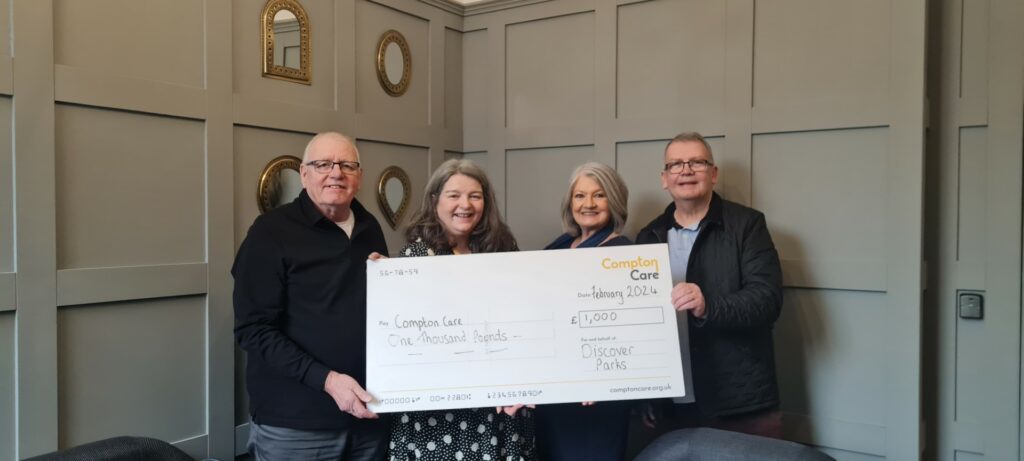Historic Hereford City
Discover the history of Hereford through Jacobean houses, medieval markets, and the Cathedral’s treasures, including the world-famous Mappa Mundi.
Half an hour’s drive from Pearl Lake and Arrow Bank, and 45 minutes from Rockbridge, is the historic city of Hereford. Famous for its cathedral, cattle, cider, and as the Gateway to the Marches.
You can trace the history of Hereford to the Bronze Age, which started in 2150BC. That’s a long time back and we know you haven’t got all day, so here’s a whistle stop tour through the ages. It’s Hereford’s history made simple!
Hereford became the centre of Magonsæte, a minor sub-kingdom of the greater Anglo-Saxon kingdom of Mercia. A Diocese was founded and a Bishop called Putta started to build a cathedral made of wood.
Close to the existing Hereford Cathedral, is the Castle Green which was used as a burial ground from as early as the 8th century. It’s well worth a walk around and is well signposted from the Cathedral.
In the AD600’s, Hereford is a military town. Armies crossed the river at a ford near where the Victoria Foot Bridge now stands. Opened in 1898, the footbridge is a lovely structure spanning the river. There are great views of the current cathedral – ideal for some modern day insta or Facebook shots!
‘Here’ is Saxon for Army and ‘ford’ is a crossing and it’s thought that this is where the name Hereford came from. In AD 736, Bishop Cuthbert is documented as leading a cathedral community in ‘Hereford’
A bit later (we said this was simple so we’re not getting bogged down by dates) the King of East Anglia, Ethelbert, visited Hereford and was murdered. He was buried in a settlement called Marden a few miles out of the city.
Ethelbert was martyred and a stone church was built to commemorate him. This is where the Cathedral now stands and where his remains now lie.
While all this was going on the Danes also known as the Vikings invaded. They were defeated at Hereford which received a royal charter for its trouble. Around 950 AD it was declared that part of Hereford, south of the River Wye was, in fact, Wales!
Pilgrims journeyed to Hereford to visit the resting places of Saints Ethelbert and Guthlac. This brought in some cash, enabling the then Bishop, Athelstone, to ramp up the continued building of the cathedral.
In AD1035, Hereford became a Shire town and an Earldom. In AD1055 there was a battle which resulted in the town and the cathedral being burned down. Lots of people were also murdered.
A chap called Harold Goodwinson turned up to start rebuilding Hereford. He’d later become King Harold and get an arrow in the eye at the Battle of Hastings.
William the Conqueror sent one of his best men to Hereford and a castle was built and trade in the city was increased. Hereford Market was moved and lots of French people settled in the city. There was quite a bit of fighting at this time and the castle was further improved to keep the Welsh and the Saxons at bay.
The largest medieval map, the Mappa Mundi is created. Drawn on calf skin, it shows how scholars of the time thought the world looked. The Mappa now resides in its own building adjacent to the Cathedral. The Chained Library is also there and both are a must see when you visit the city.
The city (technically still a town at this point) saw outbreaks of Bubonic Plague. Work on the cathedral continued and would do so until the present day.
Hereford has been associated with cider for centuries. It was first mentioned in the 1420 Wycliffe version of the bible which used the early word ‘sidir’ to describe a strong drink from England.
Hereford’s links with the Hospitallers and Templars began in the 12th Century. They’d been off fighting the Crusades in the Holy Land and ended up in Herefordshire where they’d been gifted land. They built a Commandery and moved into the city and set up next to a Priory of Blackfriars.
Unfortunately, the Priory was destroyed during the Dissolution of Monasteries. Both the Priory and the Hospital were owned by Sir Thomas Conningsby in the early 1600s.
In the centre of Hereford stands the Old House (or Black and White House, depending who you ask), built in 1621 by a butcher.
It’s now a museum and a real insight into Jacobean living. It’s a must visit!
Eleanor Gwyn was born in Hereford in 1650. There’s a bit of dispute as some think she was born in London. But we’re claiming her! She became the actress, Nell Gwynne and her comic performances were praised by Samuel Pepys who called her ‘pretty, witty, Nell’.
Nell’s mostly known for being the longtime of lover of King Charles II and selling oranges in her youth. She died aged just 37. A blue plaque marks her birthplace on Gwynne Street, just round the corner from the cathedral.
David Garrick was born in Widemarsh Street in Hereford in 1717. He was incredibly influential in theatrical practice in the 18thCentury. A mate of playwright Samuel Johnson, his portrayal in Shakespeare’s Richard III was iconic (apparently). When he died, he had a public funeral at Westminster Abbey and was buried at Poet’s Corner.
If you’re still with us – thank you! We’re running low on steam, so here come the one-liners.
The River Wye once had a quay and tow path for transport. Both have vanished now.
In 1810 the Butter Market opened in the city centre. It still sells all sorts today – well worth a visit.
By 1825 Hereford boasted 56 pubs and inns!
The cathedral kept growing with new sections added over the years.
In 1864 anglers landed a Royal Sturgeon in the Wye – 8 ft long and 4 ft in circumference.
In 1882 builders erected a water tower at Broomy Hill on the city’s edge. Today it’s a fascinating water museum full of steam engines.
In 1888 Henry Percy Bulmer opened his cider factory. The Bulmer family and cider still go hand in hand.
Between 1904 and 1911 Sir Edward Elgar lived at Plas Gwyn, a grand house in Hampton Park. He composed Enigma Variations and the Pomp and Circumstance Marches there.
In 1916 a fire at the Garrick Theatre on Broad Street killed eight schoolgirls performing for WWI soldiers.
In 1924 Hereford United FC formed. As non-leaguers they famously knocked out First Division Newcastle United in 1972. They hit their peak in the 1976–77 season by reaching the Second Division. Today they play in the National League North – catch a game at Edgar Street.
In 1960 the SAS quietly based itself at Stirling Lines on the city outskirts. The regiment moved to the old RAF Credenhill site in 2000. Want the full story? Watch the BBC1 drama Rogue Heroes. Pro tip: if someone says they’re in “The Regiment,” they’re not. If they don’t say…maybe they are.
In 1978 The Pretenders formed here, fronted by Chrissie Hynde. Lead guitarist James Honeyman-Scott died in 1982 aged 25 and rests at Lyde Church between Hereford and Leominster.
We hope you enjoyed these Hereford highlights. They’ll add colour to your visit while you stay at Discover Parks. Check out our other blogs on Shopping in Hereford and Eating Out in Hereford.

Jul 2025
Castles to visit in Herefordshire and Shropshire Herefordshire and Shropshire sit right in the heart of the strategically important Welsh...
Read more
Apr 2024
Incredible woman fighting terminal cancer, continues to raise funds & awareness As a lot of our owners on Pearl Lake...
Read more
Jan 2024
Compton Care near Wolverhampton is to benefit from a £1,000 donation, thanks to being nominated by holiday homeowners from a...
Read more